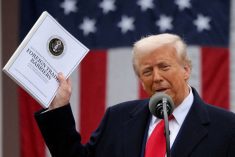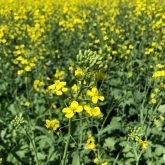There are hopes in the markets that China will soon begin its US$40 billion in purchases of United States agricultural products, as outlined in the Phase 1 trade agreement. The positive feelings have been on the rise because Feb. 15 marks the day that Phase 1 officially comes into effect.
However, there have been indications that this huge buying spree may not occur until the summer or even this fall. Then if China does proceed, will it buy the amount cited in Phase 1? The US$40 billion for 2020 is US$13 billion more than what China spent in one year on U.S. agricultural products.
Read Also

Canadian canola prices hinge on rain forecast
Canola markets took a good hit during the week ending July 11, 2025, on the thought that the Canadian crop will yield well despite dry weather.
Already, U.S. national security adviser Robert O’Brien stated on Feb. 12 that such very well could be the case. His comments lay the groundwork for trying to soften the blow should China fail to follow through.
In the meantime, U.S. President Donald Trump remains wildly popular among the country’s farmers. A survey by Farm Futures found Trump’s approval increased from an already healthy 63 per cent to a stronger 74 per cent after Phase 1 was signed. On top of that, 81 per cent of those farmers believe Trump will be re-elected come November.
The coronavirus certainly knocked the wind out of the commodity and stock markets over the last month. Presently, the number of deaths was around 1,400, with nearly all of them in China. As well, over 95 per cent of reported cases of COVID-19, the illness caused by the coronavirus, have been within China.
Now, the markets have sensed the worst is over with the coronavirus, and China will reboot its hungry demand for imports. Whether such happens remains to be seen.
There is no doubt that if and when China begins its wild spending spree, prices for soybeans, corn and wheat will get a much-needed increase. Other than that, everything else remains speculation.




















